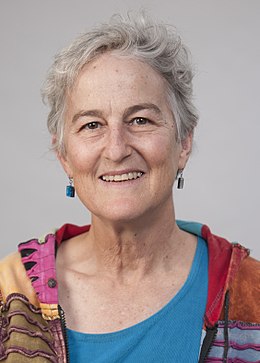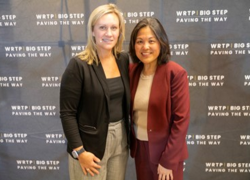In June, Secretary of Labor Marty Walsh hosted a virtual roundtable on the care economy featuring business leaders and Dr. Nancy Folbre, an economist at the University of Massachusetts. We asked Dr. Folbre to share more of her thoughts on the care economy – and what kind of investments will support America’s care infrastructure – as we continue to recover and build a more inclusive economy.

Tell us about yourself and why you chose your current career path.
I grew up in San Antonio, Texas, in a household where I was exposed to both extreme wealth and the realities of the working class. My father worked for oil millionaires as a business manager and accountant. An immigrant nanny who raised my father, known as Auntie or Tia, took care of me as a child, and I was very close to her and her successor, Maria. They were extraordinarily kind and wise caregivers. When I was about nine years old, Tia died and left me her life savings — a modest sum of money that later helped pay my college tuition. So, I had good reason to be interested in economics. I knew I wanted to go to graduate school, and to specialize in something that would at least seem somewhat practical, and was always drawn to themes like wealth, poverty and inequality.
How would you describe the care economy to someone who is unfamiliar with the term?
I use the term care economy as the site of production, development and maintenance of human capabilities — a process very different from producing commodities that easily be bought and sold. A lot of the time and money that goes into the care economy moves outside the market — in families and communities that raise children, care for sick or disabled family members, and the frail elderly. Historically this form of “production” was excluded from “the economy” simply because it is based on meeting needs rather than the forces of supply and demand. Fortunately, this is beginning to change.
The care economy, however, is not confined to families and communities; it encompasses many private and public enterprises that provide health, education and social services. There are big synergies between unpaid and paid work — parents collaborate with teachers in educating children, and doctors and nurses rely on patients and their family members to help produce “health.” Childcare workers and eldercare workers are also indispensable to effective care provision.
Women are heavily concentrated in both unpaid and paid care provision, and this helps explain why they generally earn less than men. It is harder for them to “capture” the value they create.
What is caregiving work?
One distinctive feature of caregiving work, emphasized above, is its highly customized and individually specific output. Another distinctive feature is the labor process itself, which often entails more personal connection than other types of work. These two features are clearly related — intrinsic motivation becomes especially important when it is difficult to reward people on the basis of measurable value-added. In caregiving work, concern for the wellbeing of the care recipient is quite likely to affect the quality of the services provided — the “invisible heart” of personal commitment is more important than the “invisible hand” of an impersonal market.
Why do you think it’s important to invest in the care economy?
Investment is such an important word for economists — it points to future payoffs.
The care economy produces human capabilities that have intrinsic value and also generate distinct economics benefit. People are the real wealth of nations. If you think about it, gross domestic product (GDP, the value of all goods and services bought and sold in a country) is simply an input into what we care about most — our potential to lead happy and meaningful lives.
Yet, too often, we think of GDP as a goal in itself, without considering how it actually benefits — or fails to benefit — ordinary people. Public health crises, increased income inequality, increased “deaths of despair” from suicide, alcoholism and drug abuse, and poor levels of literacy and educational attainment all represent economic losses, not just social side effects. The overall productivity of our economy is largely determined by our collective capabilities for cooperation, innovation, hard work AND the care of others.
Public investments in the care economy can pay off for everyone by improving productivity. Improved access to health, education, child care and elder care can also help heal painful divisions based on race, ethnicity, gender and class by improving opportunities for everyone to realize their own best potential.
In particular, investments in child care and home- and community-based care for people experiencing disability or frailty can reduce tensions between paid work and family work, making it easier for people (especially women) to both earn the paychecks they need and provide the unpaid care their families, friends and communities deserve. A better care infrastructure would give everyone more freedom and flexibility to design their own care “packages.”
How do you think the care investments highlighted in the Biden-Harris administration’s #BuildBackBetter agenda will benefit families?
The expanded child tax credit represents a long-overdue recognition of value that parents create for the rest of us — raising the children that will grow up to become taxpayers who help finance health insurance and pensions for the older generation, including me! The U.S. has been an international laggard in support for families, and we now have the opportunity to institutionalize this version of a family allowance for the long term. I hope we don’t miss this by letting the tax credit expire.
The proposed investments in child care and home- and community-based services for disabled and elderly persons would also bring us into alignment with other affluent nations. They can significantly enhance the quality of life for both unpaid and paid caregivers and also (speaking as an economist!) improve family productivity.
Our current national accounting system makes it difficult to clearly see or measure these gains, but there is plenty of economic research documenting the value of investments in people. It’s time to recognize that families and communities, as well as firms, contribute to the U.S. economy.

 U.S. Department of Labor Blog
U.S. Department of Labor Blog
